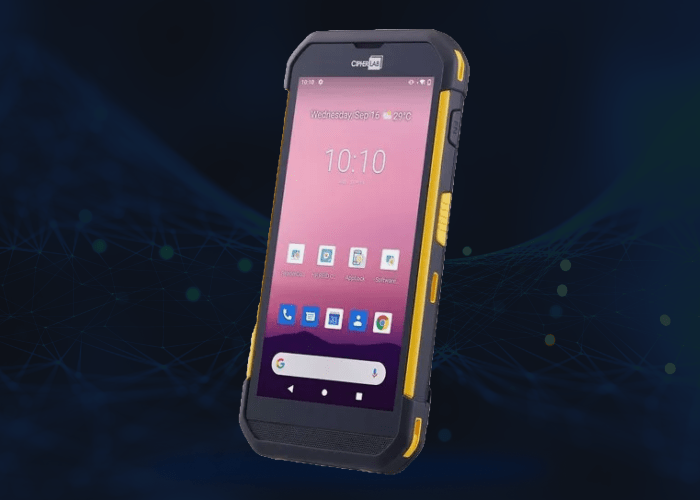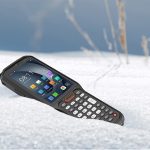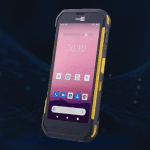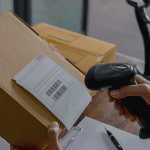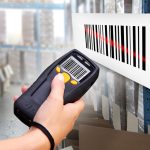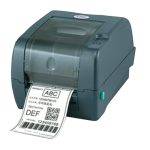Hi there and welcome to our world of PDA Barcode Scanners aka handheld mobile computers. If you are about to invest into these pda scanners, then this blog is a must read. What you need to know before you buy, will be covered here. I can guarantee you will fully armed with an arsenal of knowledge to help you make the right decisions for your company & avoid the most common mistakes made when choosing these devices.
We have been in this industry for over 17yrs now and have seen some major changes take place within our industry for these products. Actually i have been updating this blog since 2012 now as the technology keeps evolving and improving.
The evolution of pda barcode scanners continues to develop at break neck speed, with prices coming down and features going up. There are Dos Text Propriety, Windows CE, Windows Mobile and Windows Embedded Handheld and Windows 10 operating systems to choose from. In 2018, i wrote a blog about Microsoft discontinuing support for Windows CE, Windows Mobile and Windows Embedded Handheld. Android is now the preferred choice of operating system for end users for rugged handheld PDA scanners.
Most manufacturers are also mainly leaning towards only Android O/S as feedback from Microsoft is that that will no longer support Windows CE/Mobile/Embedded after 2020. For developers as well, it makes sense on developing in Android. Don’t really have any feedback with Windows 10 OS PDA scanners out in the field but feedback is you can deploy across multi platforms with this O/S.
I have to admit though, i have always been a big fan of Android The reason is they have power and speed to burn…….and….they use HTML 5 browsers. Windows CE and Windows Mobile tends to use IE browsers. Just too clunky. IE is very antiquated and slow especially for using with Wi-Fi. IE has no cache so if you are typing in a browser to search for something, it does not suggest something. Nor does it store any memory if you are moving between access points so it will not store/save the last scan……grrrr. So if you are going for Windows OS PDAs……make sure they have HTML 5 browsers.
Pda barcode scanners get called many names. Within our industry, they get called Mobile Computers, Portable Data Terminals (PDTs), Portable Data Entry Terminals, RF guns, pocket computers, handheld computers, handheld mobile computers and android pda scanners. Outside our industry, the customer looking for them, frequently call them a scanner. Which is the first mistake and lesson they need to learn. A barcode scanner can only scan the barcode item #. That’s it! A pda bar code scanner can scan a barcode ID # + capture qty, location #, date/time stamp, signature capture, take a photo, get GPS locations and much more.
Some PDA scanners used out in the field also look and work like phones and are called an Enterprise smart phone pda scanner. See the image above and link to RS31. Very popular form factor – RS31 Link.
So where do we start? Well…..every time a new customer comes to us, the questions are pretty much all the same. But the answers can be quite varied. So we start by making the customer understand that there are two components involved here. Hardware and software. One cant work without the other. We start by asking?
1. What is the application? Asset Management, Inventory Control – Stocktaking, Fields Sales Force Mobility, Job Tracking….etc etc?
Its important to identify the application so we can lay the foundations for what type of hardware, form factor and software will be required.
2. Can the data collected, be stored on the PDA barcode scanner and uploaded later into a cradle?
Collecting data and storing it on the PDA scanner is called batching. Or batch scanner. The pda scanner after scanning, has to be put into a communication cradle where the data can then be uploaded into their system. It is generally considered to be the cheapest solution when considering PDA scanners as the integration is usually quite low in cost compared to PDA scanners that have to communicate via Wi-Fi/GPRS/3G.
3. Is it mission critical that you need information live via Wi-Fi or 3G/4G network to send and receive data? If the pda barcode scanner requires a live interface, then how are you going to communicate to your back end?
If information needs to be live and you need to query a database, then you need either a Wi-Fi or 3G/4G capability with the PDA scanner. Here are a couple of typical scenarios for wireless connectivity.
1. W-Fi – 802.11 a/b/g/n. – The PDA will need Wi-Fi capabilities for it to utilise the existing wireless network to communicate. There are also a number of ways the PDA is connected back thru the Wi-Fi network.
- Using the browser on the PDA to connect to a web based application.
- Building a thin client application that will reside on the PDA scanner so when user clicks icon/app on PDA scanner, it connects back to host.
- Running a telnet client on the PDA. Still seeing a lot of legacy systems such as AS400, VT100, VT220 systems running telnet servers. Particularly very large companies. These systems are rock solid and never experience the problems that Windows based systems face. The PCs become a dumb terminal. So does the PDA scanner.
- Remote Desktop Connection.
We are also seeing more companies utilise PDAs that have 3G/4G capabilities. Buying a Sim card and inserting it into PDA scanner to send data as well as using as a mobile phone. Primarily 3G/4G connectivity is used out in the field but we are also seeing this used within the four walls if there is no existing wireless network.
4. Do you have to develop software for the application? This is always a very important consideration when looking at providing a data collection solution and choosing which type of hardware is best for your application.
If you only need the data to be collected (batch solution) and uploaded back into excel or a designated location folder on the network, you might be able to use some great free data collection software tools available out there. It might save you thousands of dollars for software development.
We use a tool called Forge Application Generator. It helps us develop simple data collection applications such as multiple fields that the user will be prompted to scan and collect data for. It also allows you to create menus for multiple applications. The whole point is its free!!! You don’t need to be a software developer (mucho deniro saved $$$) and you can upload back into excel or as a text file into a designated location on the customers PC or network. How cool is that?
However, if you have more complex data collection requirements, then forget these tools. If the data collected, needs to uploaded seamlessly into a database, then an application has to be written for this. Most developers program in C++ or .Net these days so stick to Windows based PDA scanners. There are also many developers coming out for Android based O/S PDA scanners. Stay away from Dos text propriety terminals as the code has to be written in C or Basic. Too slow. Programmers are almost all dead that write in that language…..lol. Well late 50s, early 60s. And from experience, everything just seems to take longer to get an application written. With the tools available like Visual Basic, the developers are much more proficient in programming, so costs come down! Costs for developing for Android devices maybe much lower as Android is open source. Definitely worth checking out!
There are also a few rapid development tools out there worth checking out. One is Kalipso. Very little if any coding is required. You will need training and costs for license fees but a great tool for developing your mobile applications for Windows or Android PDAs.
5. Already have Software and Want the PDA scanner to talk to it? For a PDA scanner to talk to your software, our best advice is that you need to talk to your software vendor first. Only they can provide you this answer. You do not want companies other than your software vendor, trying to bolt on third party applications and messing up your databases.
Your software vendor will need to have developed an application that can be loaded on to your PDA scanner, so your PDA scanner can talk directly with its database.
If it’s a web based application, then all the PDA scanner needs to do is use its browser. Hopefully the application will be mobile responsive so the correct screen size can be viewed and the data easily seen on the screen without having to scroll.
If your software vendor does not have anything created (which is usually the case) then its like reinventing the wheel and could be quite costly. Most companies in this situation decide to go for a standalone inventory control solution where the PDA scanner can talk to its database. Or go for a batch solution (as mentioned in point 4).
Don’t have any software application written for your PDA scanner? Track n Trace also develop custom design barcode solutions. We are more than happy to assist you in this area – Custom Design Barcode Software Link
6. What is the environment that the PDA scanner is to be used? Consider the environment that the PDA barcode scanner is going to be used in. Look at the technical brochure for the PDA and check out the drop rating and IP rating. The higher the drop rating and IP rating, means the higher the robustness. Usually also more expensive. For warehousing applications, , go for a minimum of 1.5m drop rating and minimum of IP54. For applications outside the four walls, the higher the IP rating the better. Seeing devices out there with IP64 and IP65 so very resilient to dust, dirt and water.
For clean carpeted environments, you can get away with lower IP ratings and drop ratings.
7. Full touch screen using virtual keyboard or Touch screen with physical keyboard? – When choosing the form factor of your PDA barcode scanner, you will be asked whether you require a full touch screen or touch screen with a physical keyboard.
How do your workers prefer to key in any data. This can be done either via a physical keypad or a virtual keyboard.
Feedback I am hearing from the market place is that many millennial’s prefer the virtual keyboard compared to older workers who prefer a physical keyboard. I guess this makes sense as from a very young age, they have been used to full touch screens. Where as older workers are used to physical keypads.
The older WInc CE & Win Mobile screens only ever had screens no bigger than 3.5 inches. So virtual keyboards were too small and clumsy. Physical keypads were a necessity for these devices. We are now seeing screen sizes with Android devices ranging from 4.0in to 5.7in so the virtual keypads are much easier to work with on full touch screen devices. However, it will always come down to the client and what makes their workers the happiest.
8. Processor + Memory = Power + Speed – Both the processor speed and memory of the device are important factors in how responsive your PDA scanner performs.
Enterprise rugged mobile devices should have some minimum performance specifications when choosing a device.
Processor speeds vary from Quad -Core up to Octa-core speeds now (Jan 2020). The more processor speed the better the performance. However, if the application has low demand requirements, then you will not see a great deal of performance improvement between Quad-Core to Octa Core. However, if you application is quite demanding. Possibly querying large data bases, then there may be a slight lag performance in the scanning of items with the Quad -Core processor. Best to go for a higher performance processor such as the Octa-Core processor.
Also, having more RAM and ROM will also help improve speed and performance. Now seeing 4GB RAM – 64GB ROM creeping in as optional now for devices.
9. Mobile Device Management (MDM) – If you are looking at acquiring 10-15+ x PDAs, then you might want to consider looking at a MDM to manage them all. This will save you a lot of time and money.
- Errors can be resolved on PDA without having to bring them back to head office.
- Updates on application can be made over air – cellular network.
- Monitor status of where driver/employee is.
- Advise user that battery power is almost dead.
- Update route
- Create Geo fences for devices so if device is taken outside of this area, it locks down.
- Much much more.
A popular MDM our customers are using is a service Soti MobiControl.
This is a paid service and is based on costs average around $6.00-$6.50ex AUD per device per month. This may vary slightly depending on qty devices.
Urovo is a brand we have started working more with who also have a MDM that is provided as a free service with all their range of PDA scanners. Urovo MDM link
You may also want to check the device you are considering also has staging software. This is crucial if you are setting up more than 10 x devices. The idea is that you only have to set one device up with all its configuration settings (WI-Fi settings, back light settings, barcode reader config settings..etc etc) and that is replicated to all the other devices. Either by transmitting the data. Or a barcode is created of the settings and all you do is scan it with all the other PDA scanners.
10. Scanning Engines – which option to choose on? Within PDA scanners you will have an integrated scanning engine. There are several types of scanning engines available. There is linear imager, laser, 2D imager, medium and long range 2D imagers.
2D imagers used to be the last choice of option when deciding on your PDA scanner. That was because they were the most expensive option and you only decided on this option if there were 2D barcodes that needed to be scanned. This is not the case anymore.
2D imagers have dropped in price significantly to the point where they are your best value for money choice now. They offer easier scanning of barcodes than linear imagers and lasers. This is because you can scan at any angle with a 2D imager. With linears and lasers, you have to line up the beam with the barcode. So you now have increased efficiency and speed of scanning.
2D imagers will also scan faded and damaged barcodes much more easily than the traditional scanning engines as well.
If you require scanning distances from PDA scanner to barcode of more than 1 metre, than medium and long range 2D imagers are your best options.
11. Local Service & Support? Do not invest in expensive hardware like PDA barcode scanners if you cannot get local service and support. You are asking for trouble if you go and buy your hardware from overseas to save a few dollars. In the long run, it could cost you much much more doing this.
To finish off this blog we would like to point out one more critical piece of information. Probably the biggest mistake people/companies make when choosing a PDA barcode scanner. Some customers come to us looking for a PDA scanner and then later go looking for their application software. They have got it all backwards. Biggest mistake is investing in the hardware first and then trying to tie it into the application software later on. Find the right application software for your business first. Make sure it also has capabilities of being able to communicate with a PDA scanner. This way you save thousands on having to write any integration software for the PDA scanner. The application software will usually have a client piece of software that loads on to the PDA scanner, giving it the capabilities to sync with the applications software database.
We really hope this blog helps you in your decisions and saves you making any costly mistakes. Look forward to hearing back if this was of any help to you! Feel free to also reach out if you require any further information – [email protected]
